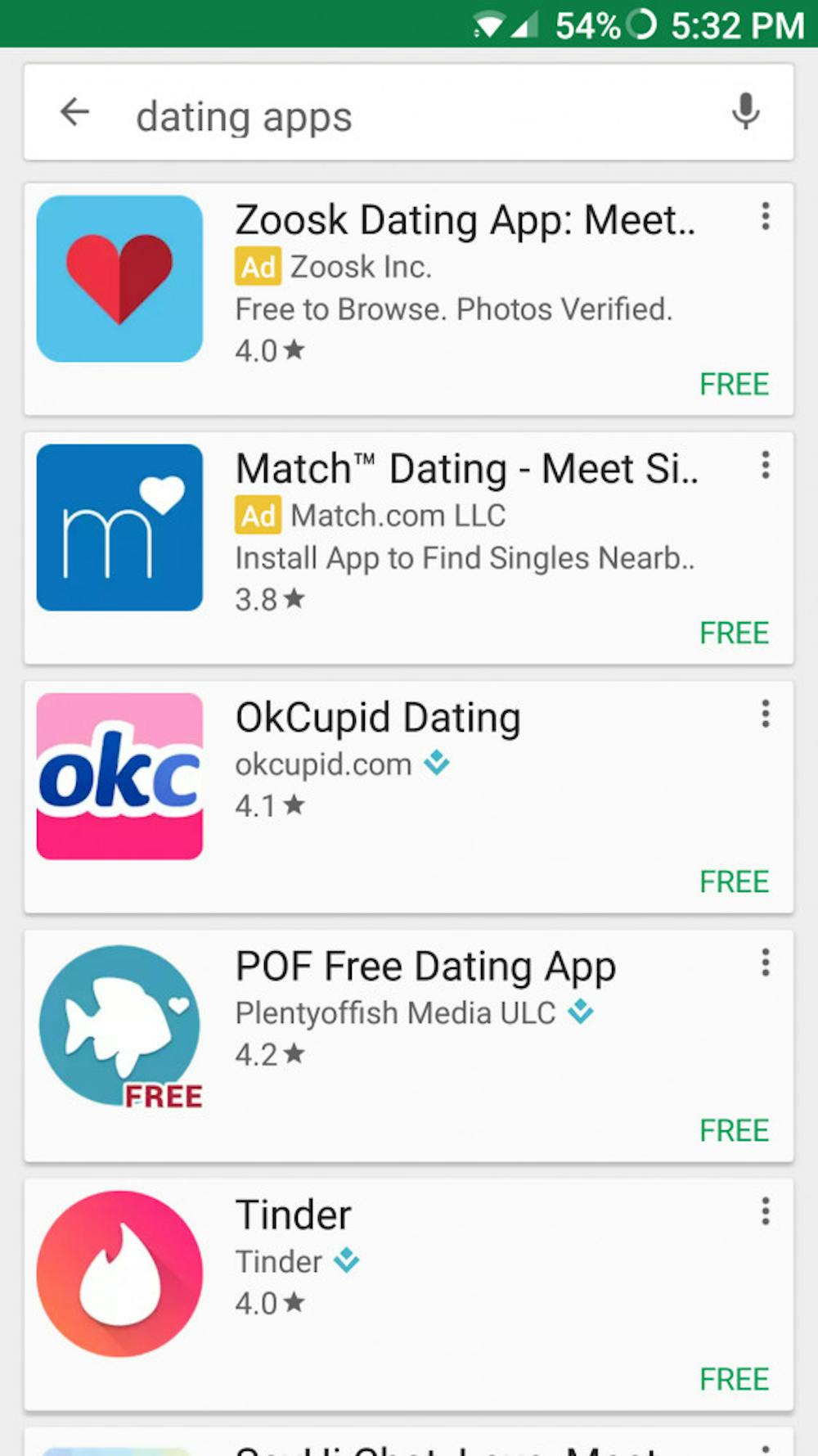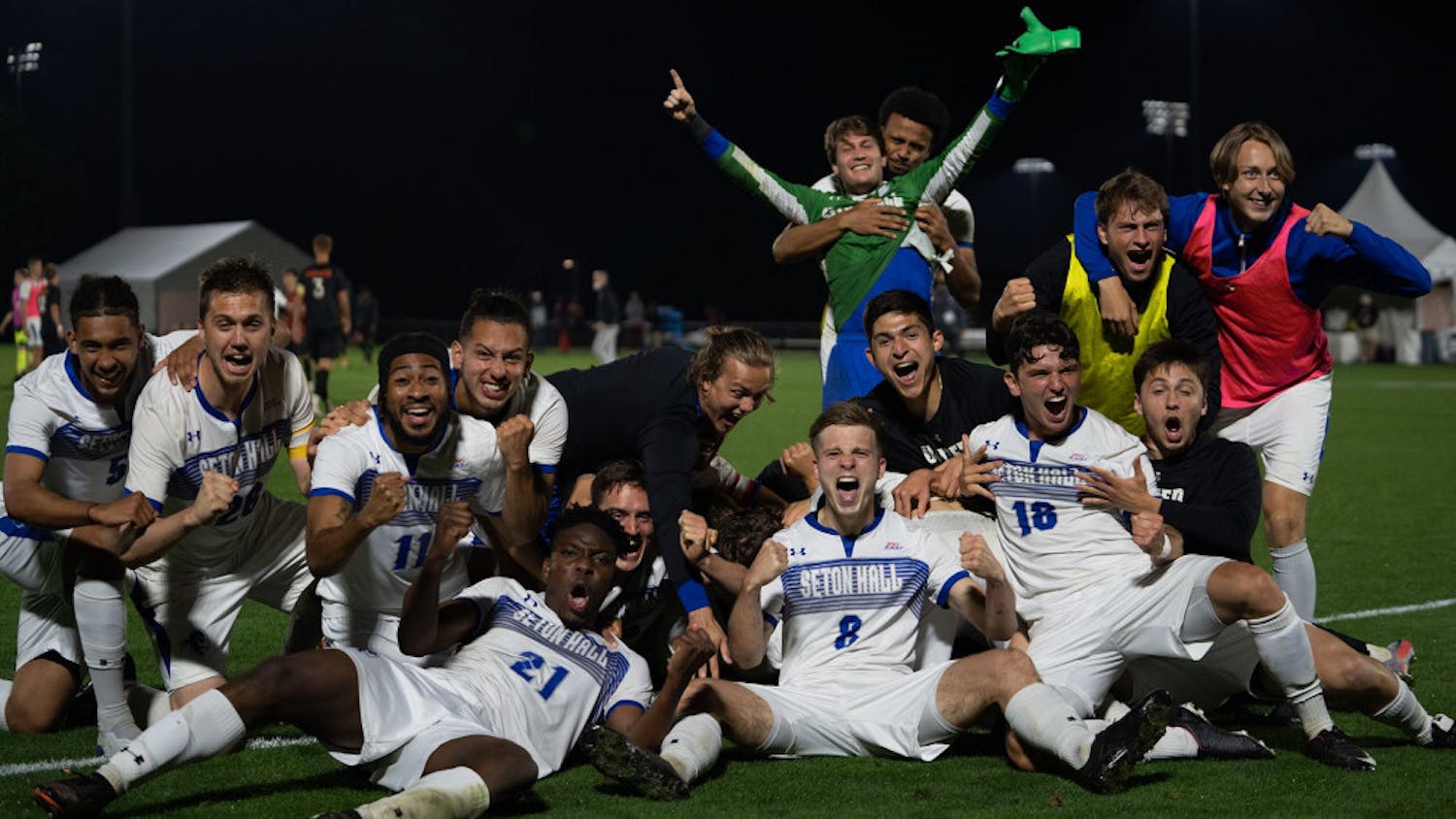[caption id="attachment_17117" align="aligncenter" width="576"] Screengrab via Google Play Store[/caption]
A 2015 Pew Research Center survey found that the percentage adults aged 18-24 using dating apps quadrupled since 2013. Among the more than 2,000 people surveyed, those who reported ever using dating apps rose from five percent in 2013 to 22 percent two years later.
Sociology Professor Leslie Bunnage explained this increase in popularity as a reflection of the major role technology plays in everyday life.
“For younger people, who have been immersed in this kind of technology for the bulk of their lives, it is comfortable,” Bunnage said, “It is the way we retrieve information now.”
Bunnage added that courtship and dating habits constantly change over time. She explained that using dating apps does not necessarily mean the relationships someone forms will be superficial. Regardless of the app, users are likely to make the experience their own and seek out the type of relationships they want.
“The reality is that it’s an application,” Bunnage said, “Even if it has potential to be used in all these different ways, you don’t know how people are going to use it until you see how they actually use it.”
For example, in 2016 WayUp, an organization that assists college students in finding jobs and internships, reported that, of 200 students surveyed, 53 percent said they used dating apps such as Tinder to find friendships.
The same survey ranked the popularity of different dating apps. 73 percent of participants claimed Tinder was their preferred app, 13 percent favored Bumble and 10 percent primarily used OkCupid. The remaining four percent were not specified in the study.
Bunnage attributes this diversity in preference to how specific the demographic has become for certain dating websites, citing FarmersOnly.com as an example.
While she acknowledged that app users can craft the experience they want, she said she sees the future of online dating as an even more individualized process.
“My guess is that there will be an expansion of user control and that the best apps will be the most flexible ones that can grow with (users) for different phases of their lives when they are indeed seeking different things out,” Bunnage said.
Despite the fact that dating apps can be used for a variety of different reasons, SHU students seem to have mixed feelings about them.
Stacie Elfo, a sophomore psychology major, explained that these apps are not guaranteed to lead to successful relationships.
“I think the modern dating scene has transformed or changed and a lot of people have become dependent on these apps which make it hard for people to meet and build a relationship,” Elfo said, “I think they work for some and not for others ultimately.”
Other students point out the potential dangers of online dating.
Ashley Banks, a sophomore psychology major, said online daters should be cautious when arranging a meeting offline.
“First off, there is a huge scare that the person you meet online could turn out to be a bad person and anyone meeting someone offline most definitely should meet them in a public place,” Banks said, “I think the entire experience can be too forced and the process can be very unsuccessful for people that want a real relationship.”
Rebecca Marcinko, a sophomore elementary special education and environmental studies major, said that she has seen many successful relationships result from dating apps.
“My high school band director met his wife on eHarmony awhile back,” Marcinko said, “They have been married a few years and now have a daughter together. I am not personally a fan because I would rather meet someone first but they seem to work for some people so why not try it out if it’s something you’re comfortable with?”
Julie Trien can be reached at julie.trien@student.shu.edu
Screengrab via Google Play Store[/caption]
A 2015 Pew Research Center survey found that the percentage adults aged 18-24 using dating apps quadrupled since 2013. Among the more than 2,000 people surveyed, those who reported ever using dating apps rose from five percent in 2013 to 22 percent two years later.
Sociology Professor Leslie Bunnage explained this increase in popularity as a reflection of the major role technology plays in everyday life.
“For younger people, who have been immersed in this kind of technology for the bulk of their lives, it is comfortable,” Bunnage said, “It is the way we retrieve information now.”
Bunnage added that courtship and dating habits constantly change over time. She explained that using dating apps does not necessarily mean the relationships someone forms will be superficial. Regardless of the app, users are likely to make the experience their own and seek out the type of relationships they want.
“The reality is that it’s an application,” Bunnage said, “Even if it has potential to be used in all these different ways, you don’t know how people are going to use it until you see how they actually use it.”
For example, in 2016 WayUp, an organization that assists college students in finding jobs and internships, reported that, of 200 students surveyed, 53 percent said they used dating apps such as Tinder to find friendships.
The same survey ranked the popularity of different dating apps. 73 percent of participants claimed Tinder was their preferred app, 13 percent favored Bumble and 10 percent primarily used OkCupid. The remaining four percent were not specified in the study.
Bunnage attributes this diversity in preference to how specific the demographic has become for certain dating websites, citing FarmersOnly.com as an example.
While she acknowledged that app users can craft the experience they want, she said she sees the future of online dating as an even more individualized process.
“My guess is that there will be an expansion of user control and that the best apps will be the most flexible ones that can grow with (users) for different phases of their lives when they are indeed seeking different things out,” Bunnage said.
Despite the fact that dating apps can be used for a variety of different reasons, SHU students seem to have mixed feelings about them.
Stacie Elfo, a sophomore psychology major, explained that these apps are not guaranteed to lead to successful relationships.
“I think the modern dating scene has transformed or changed and a lot of people have become dependent on these apps which make it hard for people to meet and build a relationship,” Elfo said, “I think they work for some and not for others ultimately.”
Other students point out the potential dangers of online dating.
Ashley Banks, a sophomore psychology major, said online daters should be cautious when arranging a meeting offline.
“First off, there is a huge scare that the person you meet online could turn out to be a bad person and anyone meeting someone offline most definitely should meet them in a public place,” Banks said, “I think the entire experience can be too forced and the process can be very unsuccessful for people that want a real relationship.”
Rebecca Marcinko, a sophomore elementary special education and environmental studies major, said that she has seen many successful relationships result from dating apps.
“My high school band director met his wife on eHarmony awhile back,” Marcinko said, “They have been married a few years and now have a daughter together. I am not personally a fan because I would rather meet someone first but they seem to work for some people so why not try it out if it’s something you’re comfortable with?”
Julie Trien can be reached at julie.trien@student.shu.edu

Comments




